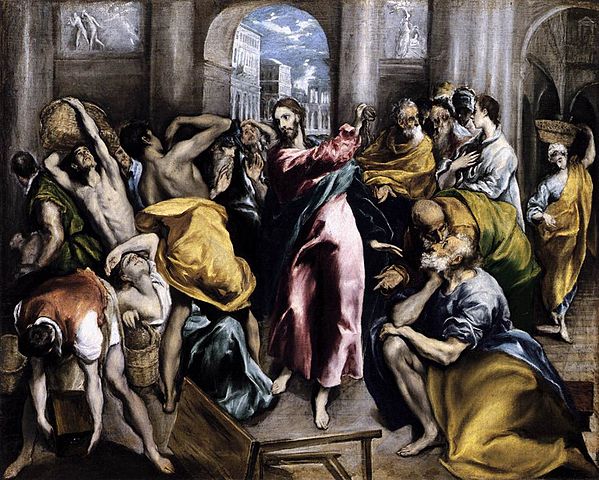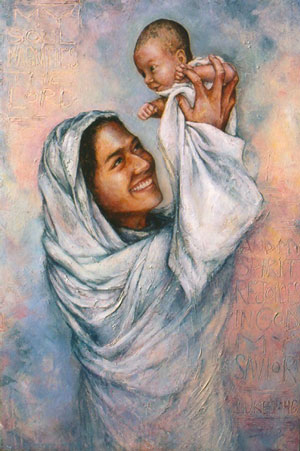The
Triumph of the King. It sounds rather ponderous, like one of the bits of
Tolkien that only hardcore geeks read. Or worse, it sounds presumptuous. Because we all know what
happened in this triumph. Decent preacher from the north country, comes
sweeping into the capital city, gets arrested by the authorities for sedition,
put to death in a really nasty way. Some triumph. Of course, we also know
happened two days later, on the great day that we’ve come to call Easter Sunday,
when he rose from the dead.
Nobody
knew this was going to happen on a Sunday morning when that preacher, the
firebrand from Galilee who went around preaching the kingdom of God, and
performing healings, and opening people’s eyes to God, when that man Jesus
entered the gates of Jerusalem. And while what happens next really matters, and
many of us here will spend the coming week remembering it and mourning it and celebrating
it, I want to invite you to think yourself into the minds of the people in the
crowds that Sunday morning. Forget what you know about the events of the
following week. What kind of strange event was going on that morning?
As
a way into this, I thought we might start with a quiz. So, a show of hands
please. What does Hosanna mean? Is it: A.
Hail, O Lord! or B. God be praised!
or C. Save us, Lord! or D. Give me oil in my lamp.
And
the answer is… C: Save us, Lord! I was genuinely surprised to find the answer
to this one when I read it a few days ago. You know the word hosanna. You’ve
sung it many times in different songs [including this morning??]. But have you
stopped to think what it means? I hadn’t done so before I started reading about
this passage. I guess I thought it meant something like A or B, something
similar to the word ‘hallelujah’. But it doesn’t. It refers back quite
explicitly to the psalm we spoke together, with its line: “Save us, we beseech
you, O Lord!”. So it’s not a cry of praise at all, it’s a cry for help. It’s a
cry from the heart, like the psalm which says “out of the depths I cry to you,
O Lord. Lord, hear my voice!”
And
the people of Jerusalem needed help. They needed to cry out to God. They were
living under an oppressive ruler who was the puppet of the world’s largest
empire, noted for its brutality. And yes, God answered. He sent them what they
were asking for. But it wasn’t quite what they were expecting. They expected a
very different triumph from the one they received.
 Let’s
talk about that word Triumph a bit more. The cities of Europe, old and new, are full of arches
like this, set up by victorious military leaders to celebrate their victories.
They’ve been around for millennia. This one, the Arc de Triomphe, was put there
by Napoleon. There are at least two in London. But they were perfected by the
Romans, as a way of celebrating the victories of their generals and rubbing it
in for the defeated people.
Let’s
talk about that word Triumph a bit more. The cities of Europe, old and new, are full of arches
like this, set up by victorious military leaders to celebrate their victories.
They’ve been around for millennia. This one, the Arc de Triomphe, was put there
by Napoleon. There are at least two in London. But they were perfected by the
Romans, as a way of celebrating the victories of their generals and rubbing it
in for the defeated people.
These
Roman triumphs had similar features. There was a victorious leader, riding on a
war-horse or in a chariot, accompanied by his troops. The local dignitaries
would make grand speeches about the leader’s achievements. The leader and his
party would go to the grand temple to give thanks to their gods. And they would
bring the spoils of the war – the treasures they had looted, the slaves they
had captured, often killing those captives at the end of the process to show
their power.
Jesus’
entrance into Jerusalem was certainly celebrated and was triumphal in its own
way. But it was different from the Roman triumphs in almost every possible
respect.
 First,
he didn’t come in on a war-horse or a chariot, like the Roman leader in the picture here. He came into the city on a colt, a young donkey (so
young that its mother came along with it). Now, there was a prophecy involved,
which Matthew quotes from Zechariah. But there was also the basic fact in that
region that donkeys were humble animals ridden by simple folk. You might know
the hymn to the tune of Drunken Sailor, which goes “We have a king who rides a donkey… and his name is Jesus”.
First,
he didn’t come in on a war-horse or a chariot, like the Roman leader in the picture here. He came into the city on a colt, a young donkey (so
young that its mother came along with it). Now, there was a prophecy involved,
which Matthew quotes from Zechariah. But there was also the basic fact in that
region that donkeys were humble animals ridden by simple folk. You might know
the hymn to the tune of Drunken Sailor, which goes “We have a king who rides a donkey… and his name is Jesus”.
Next,
he didn’t get lots of grand speeches. Of course there were palm branches and
those shouts of hosanna. But there were no local dignitaries telling us of his
great deeds. Instead there were people openly saying “WHO? FROM WHERE?” Not so
much scorn as plain bewilderment.
 And
then there was Jesus’ actions when he entered. As I said, the Roman generals
went straight to the temple. They brought animals to sacrifice, gifts to give
to their gods. Jesus
also went straight to the temple. But not to sacrifice. He went to turn things
upside down – he drove out the money-changers and salesmen, he cured the blind
and lame. He took away the petty acts of exploitation that the temple brought
upon those who came to worship there, and he healed people instead. In other
words, he fulfilled that cry of hosanna, save us, straight away – but to save
the people from the ways they were exploited and oppressed by their own people.
And
then there was Jesus’ actions when he entered. As I said, the Roman generals
went straight to the temple. They brought animals to sacrifice, gifts to give
to their gods. Jesus
also went straight to the temple. But not to sacrifice. He went to turn things
upside down – he drove out the money-changers and salesmen, he cured the blind
and lame. He took away the petty acts of exploitation that the temple brought
upon those who came to worship there, and he healed people instead. In other
words, he fulfilled that cry of hosanna, save us, straight away – but to save
the people from the ways they were exploited and oppressed by their own people.
So
how did the people respond? Let’s look at that a bit more.
They
waved palm branches of course. That’s the famous thing about the day. It was
traditional to wave palm branches on Sukkot, the Feast of the Tabernacles,
which was a harvest festival which also remembered the way the Israelites lived
during the Exodus. But they were also the symbol of Judas Maccabeus, celebrated
as the man who liberated the people of Israel two centuries earlier. And for
the Romans the palm branch was a symbol of the goddess of victory. So there was
celebration in the waving of palms but there was a political statement too.
 And
of course the very next thing the people do, according to Matthew, is to cry
“Hosanna” – save us, Jesus. Save us from the people who oppress us. Deliver us
from our enemies. They call him the son of David, and they say that he comes in
the name of the Lord. Again these are quotes from the psalm, but they are
strong statements about the kind of king they want, the kind of king they see
Jesus as. This is a moment of transformation, of change. If you know the
musical Jesus Christ Superstar, perhaps you remember the moment when the crowds
are singing “Hosanna, hey sanna, sanna sanna ho”, and at the same time the
priests are singing “Tell the rabble to be quiet, we anticipate a riot – this
common crowd is much too loud”. This is a triumph of a very kingly sort, albeit
a Jewish triumph rather than a Roman one.
And
of course the very next thing the people do, according to Matthew, is to cry
“Hosanna” – save us, Jesus. Save us from the people who oppress us. Deliver us
from our enemies. They call him the son of David, and they say that he comes in
the name of the Lord. Again these are quotes from the psalm, but they are
strong statements about the kind of king they want, the kind of king they see
Jesus as. This is a moment of transformation, of change. If you know the
musical Jesus Christ Superstar, perhaps you remember the moment when the crowds
are singing “Hosanna, hey sanna, sanna sanna ho”, and at the same time the
priests are singing “Tell the rabble to be quiet, we anticipate a riot – this
common crowd is much too loud”. This is a triumph of a very kingly sort, albeit
a Jewish triumph rather than a Roman one.
And
then he’s in Jerusalem and something strange thing happens. The tone
of the crowd changes. It’s no longer “hosanna” but rather it’s “who is this
man?”. They don’t know what to make of Jesus, this strange radical figure. One
reason for this, perhaps, is that there are two crowds – the palm-wavers are
the people who have followed Jesus from Galilee, while the ones asking who he is,
are those who live in Jerusalem. But it’s still a great question, and one we
might spend our whole lives answering: who is this Jesus for us?
And
if that’s how the people responded, can we respond today?
Two
thoughts. The first is from Helder Camara, long-time archbishop in Brazil and a
man of great spiritual wisdom. He was once asked how he kept his humility in
the face of all the wealth and power that comes with being an archbishop. He
said that he imagined himself entering Jerusalem in triumph – but not as Jesus.
He imagined himself as Jesus’ donkey, carrying him to where he needed to be.
And
the other thought is a bit like it. I mentioned earlier the hymn “We have a
king who rides a donkey”. It ends with the following words: “What shall we do
with our life this morning? Give it up in service!”
Because
that’s what Jesus did. The road through the gates of Jerusalem led Jesus to Calvary,
and to giving up his life for others. Palm Sunday is a triumphant time, but
it’s not the kind of triumph that the Romans expected, or that the Jews
expected, or that the disciples expected.
Jesus
came into Jerusalem in an act of triumph, but it was a triumph that turned
everything upside down just as much as his earlier preaching and actions had
done. He came to proclaim a victory of the humble over the mighty, of the weak
over the strong, of the oppressed over the oppressors. Now that’s what I call a
triumph.



.jpg)
















